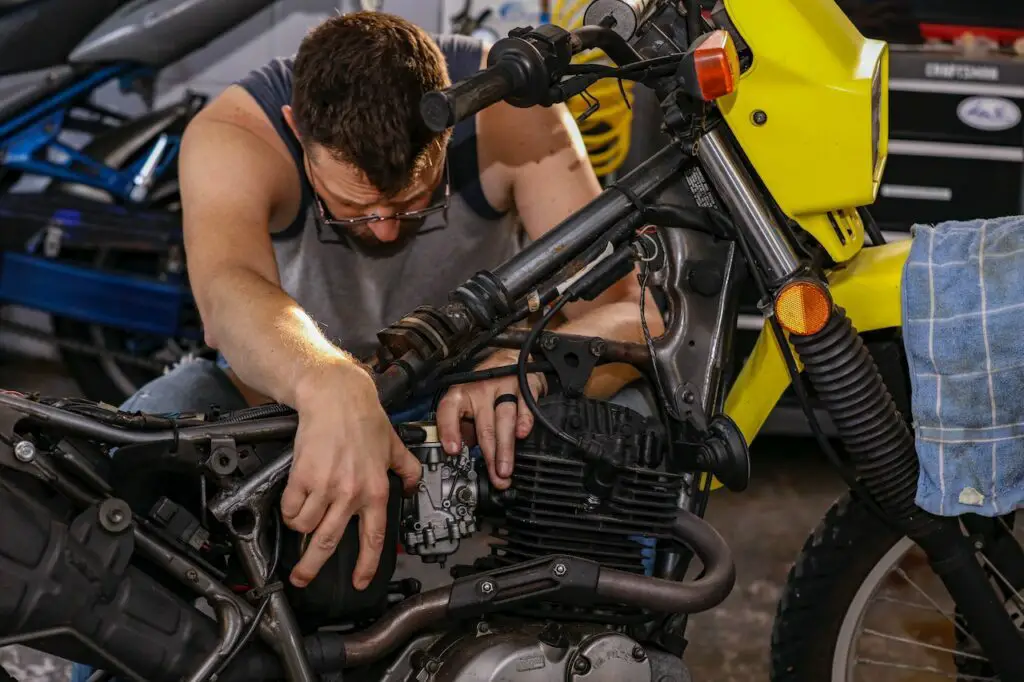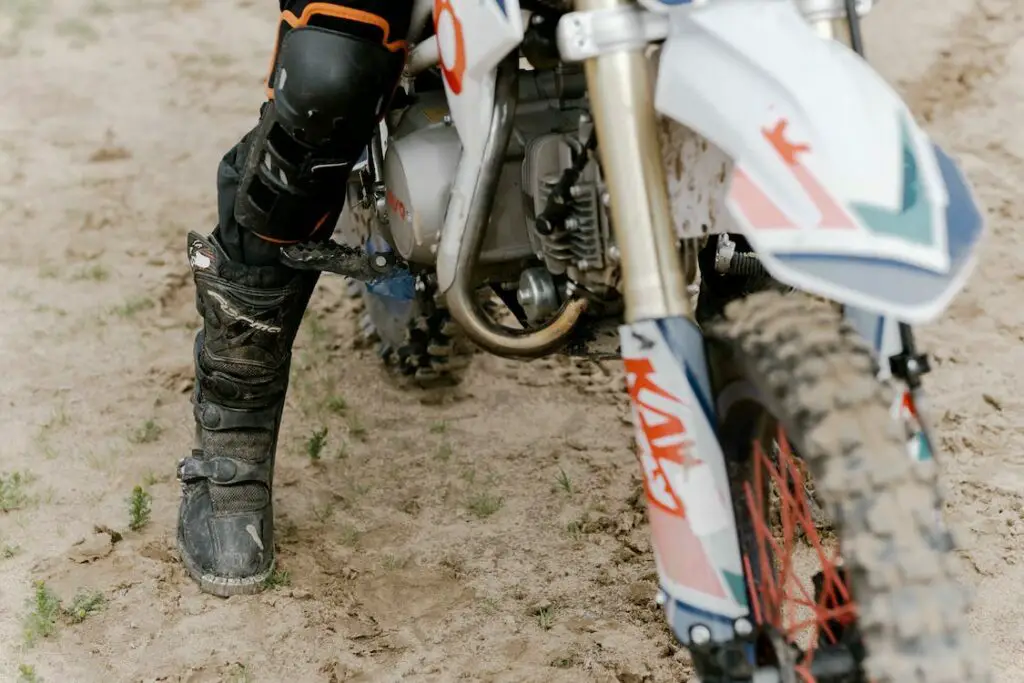Having been a dirt bike rider for many years now, I can attest that using the right type of coolant is one of the secrets to utilizing the full potential of your dirt bike.
But when I was still a novice about dirt bike maintenance, I remember asking myself, “Is motorcycle coolant the same as car coolant?”
And if you’re reading this post, I know you’re curious about it too because, after all, they’re both coolants. Right?
Motorcycle coolant and car coolant share various similarities in their duty to prevent a vehicle’s engine from overheating, such as having ethylene glycol as one of its components. Certain car coolants contain ingredients that can harm a dirt bike’s engine, such as silicates and phosphates.
Is motorcycle coolant the same as car coolant?
Car coolant. Motorcycle coolant. Since they are both used for cooling your engine, doesn’t it mean they’re almost the same? And that I can use car coolant for my dirt bike?
Well, yes, but also no.
Of course, to keep your bike in pristine condition, you should use the recommended coolant for your dirt bike.
As manufacturers and experts say, always go for what’s built specifically for your bike, and that means formulated motorcycle coolants.
But if you happen to put car coolant on your dirt bike (or any other motorcycle), it won’t be a major crime, either.
Your bike will still run fine.
That’s because most coolants are made with almost the same ingredients and other components that work for dirt bikes and car engines.
But keep in mind that not all car coolants are safe for your dirt bike.
If you need to change your dirt bike’s coolant and only have car coolant at hand, make sure it contains ethylene glycol antifreeze.
The ethylene glycol allows your engine to withstand freezing temperatures while increasing your engine’s boiling point so that proper cooling of your dirt bike can happen.
Also, make sure that the coolant doesn’t have silicates in its ingredients.
A car’s coolant usually contains silicates to protect metal parts from corrosion.
However, they have the opposite effect on motorcycle and dirt bike engines and end up doing more damage to the engine’s components.
Silicates from car coolant are known to cause damage to engine components and lead to corrosion, especially with a dirt bike’s cooling system made mostly of aluminum or magnesium.
Silicates can also damage water pump seals and cause deposits to form, reducing heat transfer and causing temperature sensor malfunction, which leads to overheating.
What type of engine coolant does your dirt bike need?
Motorcycle coolant is a mix of glycol (ethylene or propylene) and water that helps keep your dirt bike’s engine cool.
It has a higher boiling and freezing point than plain water and a lower viscosity for smooth flow through the engine’s cooling system.

The appropriate coolant for your dirt bike may vary, but all high-quality options will have these properties:
Heat reduction
When the engine reaches an extremely high temperature, the metal parts of your engine, such as the pistons, can expand and may result in metal-to-metal friction. If this happens frequently, it can result in engine failure.
High-quality motorcycle coolant can easily absorb the heat from your engine and transfer it to the radiator, where the heat dissipates into the atmosphere.
Prevents corrosion
Dirt bikes and motorcycles have aluminum cooling systems which are well suited to being lightweight yet sturdy but can be prone to corrosion.
So to keep your engine safe, avoid using car coolants with silicates and phosphates since they can wear away the aluminum parts.
Opt for a motorcycle coolant mixed with distilled water and antifreeze instead to ensure your engine stays corrosion-free and has no mineral buildup inside.
Made with premium additives
It’s imperative to use high-quality motorcycle coolant that contains premium additives to ensure your coolant lasts longer.
These additives also protect your engine from contaminants that can damage the cooling system over time.
Lower-quality coolants may lose their anti-corrosive and anti-freezing properties faster and become acidic, resulting in the need for frequent replacement.
Water-based coolant vs. Waterless coolant: which is better?
When it comes to motorcycle coolants, you’ll find two main types: water-based and waterless coolants.
Water-based coolants are made up of water and glycol (ethylene or propylene) and are popular among riders because they are cheap and easy to use.
In addition to being easy to find, they are also effective at regulating the engine’s temperature.
However, they are not ideal for racing because water has a lower boiling point and can cause your engine to overheat quickly while in the middle of the race.
Also, some water-based coolants may lack anti-corrosive ingredients, and the water in the mix tends to corrode the engine cooling system.
Waterless coolants, on the other hand, contain pure glycol and don’t require water, making them more heat resistant and less prone to corrosion in the engine cooling system.
This makes them a popular choice for extreme riding conditions like motocross.
The downside to these coolants is that they’re more expensive than water-based coolants, so most weekend riders choose to make do with the water-based coolants.
Ethylene vs. propylene glycol coolants
Motorcycle coolants can also be categorized based on their glycol content.
Ethylene glycol-based coolants
Ethylene glycol coolant is popular among dirt bike riders for its ability to absorb and dissipate heat from the engine, anti-corrosive properties, and affordability.
However, it’s also toxic and harmful to humans and the environment, so if you’re using ethylene-glycol-based coolant, handle it with care and dispose of it properly when changing the coolant.
Propylene glycol-based coolants
Some riders prefer propylene glycol coolants for their reliability and effectiveness.
They use organic acid technology (OAT), which makes them safer and more environmentally friendly than ethylene glycol coolants.
Riders who use propylene glycol coolants also claim that the temperature of their engine runs a few degrees lower. .
In addition, they have better engine cooling when idle compared to ethylene glycol coolants.
The only downsides to propylene glycol are that it costs more and needs to be changed yearly.
When choosing a coolant for your dirt bike, take your time and don’t feel rushed. You don’t need to replace engine coolants as often as engine oil, anyway.
When in doubt, always consult your manual. It also includes recommendations for the best dirt bike coolant from the manufacturer.
Wrapping up
When it comes to coolants for your dirt bike, it’s wise to use one specifically designed for motorcycles and dirt bikes.
Car coolants may contain silicates that can corrode the aluminum or magnesium components of your dirt bike’s cooling system.
But if push comes to shove and you have to use car coolant on your dirt bike, at least make sure it’s ethylene or propylene glycol-based and has no silicates.
Now, when choosing a coolant for your dirt bike, it’s imperative to select one that will keep your engine running safely and efficiently.
Take your time and consider whether water-based, waterless, ethylene-based, or propylene-based coolant is suitable for your bike.
For added peace of mind, check your manual for the manufacturer’s recommendations.



